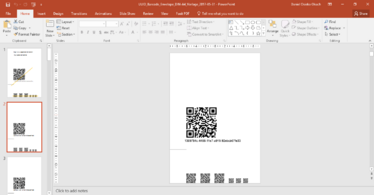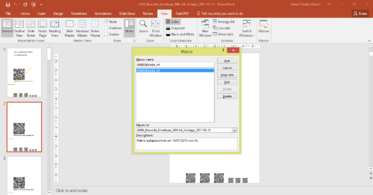Procedure for preparing UUID-QR-codes for labelling sampling containers
Preparing UUID-QR-codes for labelling sampling containers
Samples collected during field campaigns are either contained in plastic boxes, plastic bags, paper envelopes or any other form of container suited for the sample type.
For a workflow, as described by Triebel et al. (2018), containers need to be prepared by assigning labels with universally unique identifiers (UUID), being represented as a QR-code. UUIDs may be generated on bulk from the website UUID Generator (UUID version 4), and corresponding QR-codes from TEC-IT Online QR-Code Generator respectively.
When using the generator for UUID version 4, the number of UUIDs needed may be entered under `Bulk Version 4 UUID Generation‘ and the `Generate‘ button activated for creating a list (see below).
By clicking `download‘, the listed UUIDs may be retrieved in text format (Notepad).
The unsaved notepad copy file containing the UUIDs should be used to generate the corresponding QR-codes, e.g. from TEC-IT Online QR-Code Generator.
The `Online barcode generator‘ on the left side of the screen, `2D barcode‘ may be selected.
One of the UUIDs from the listing may be cut out and pasted under the `data‘ slot at the centre of the webpage. Using the refresh option, a QR barcode will be generated on the right screen of the webpage as shown below.
The QR-code might then be copied as an image and pasted into a MS Powerpoint template document with activated macro (download here ###.ppt).
The human-readable UUID, might also be pasted onto a specifically designated slot in the document (below the barcode in the figure above). On the MS Powerpoint file: click on view, macros select `UUIDQRcode_A4` and then run to activate macro.
The macro may be configured differently, depending on the sizes of the QR-code desired. Macros for paper envelops may be larger and one code may be sufficient for an A4 size paper; for small boxes and containers, much smaller QR-codes (18 per A4 size paper) may be required (see illustration below).
The described steps may be repeated until the desired number of UUID-QR-coded envelopes or boxes has been attained. The generated UUIDs and QR-coded documents should be printed in A4 size papers and folded into envelopes or trimmed into smaller pieces for attachment on plastic boxes. When using plastic boxes, the trimmed print-outs should be glued on the lower side of the boxes and may be sealed using a transparent tape (for easier readability during scanning) to avoid dampening during storage in the fridge. Pasting the print-out on the box lids should be discouraged since the lids can easily be misplaced, thereby causing confusion among samples.
Back to Sampling with GPS-enabled smartphone and DII
Back to Training materials






